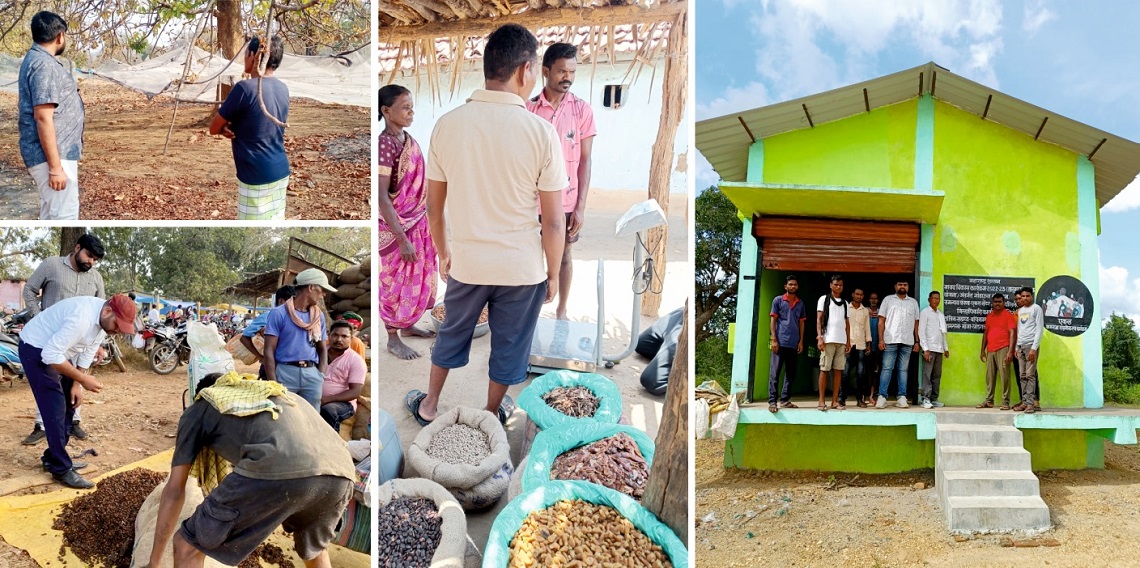From the CPO's Desk
Emerging Trends in Marketing of Non-Timber Forest Produce:
Central Indian Context

Non-Timber Forest Produce (NTFP) plays a vital role in sustaining the livelihoods of over 275 million people in India, contributing an estimated annual market value of INR 30,000 Crore. Central India, comprising states like Maharashtra, Madhya Pradesh, Chattisgarh, Jharkhand and Odisha contributes over 40% of the country’s NTFP supply. A significant shift is evident in the market, transitioning from the trade of raw materials such as tendu leaves, mahua flowers, chironji, and various seeds to value-added products like herbal medicines, essential oils, and natural cosmetics (Sources: Ministry of Tribal Affairs, TRIFED Reports, and Independent Market Analysis).
This transformation has been catalyzed by branding initiatives emphasizing the cultural and ecological significance of NTFPs. Tribal-focused brands like Tribes India and state-supported ventures like, TRIFED-Odisha, Chattisgarh Herbals are successfully positioning products such as mahua, chironji, and tamarind in premium markets. These strategies are creating opportunities for national and international outreach, ensuring better returns for tribal producers.
Emerging Trends in NTFP Marketing
The marketing of NTFPs has undergone significant changes, driven by advancements in technology, policy support, and evolving consumer preferences. There is a growing emphasis on value addition at the source to enhance profitability. Products like herbal teas, honey, essential oils, and cosmetics are being processed locally, which not only improves shelf life but also helps fetch higher prices. Branding has further elevated the market appeal of these products, with initiatives like Tribes India and Chattisgarh Herbals setting benchmarks for promoting regional and tribal identity.
The rise of digital platforms has also played a pivotal role in expanding the reach of NTFPs. Online marketplaces such as Amazon, Flipkart, and niche platforms dedicated to organic and sustainable products have made these goods more accessible. Social media is increasingly used to highlight the cultural narratives behind these products, allowing tribal communities to connect with niche markets.
Government Policies and Institutional Support
Government policies and institutional support have further bolstered this sector. The Forest Rights Act (2006) has empowered communities to directly market their produce, while the Minimum Support Price (MSP) scheme introduced by TRIFED ensures fair pricing for selected NTFPs. Van Dhan Vikas Kendras (VDVKs), established to promote the collection, value addition, and marketing of NTFPs, are helping bridge the gap between producers and markets.
Certification and eco-labeling are emerging as critical drivers for market growth. Organic and fair-trade certifications are particularly popular in urban and international markets, while Geographical Indications (GIs) are being sought for unique products such as Bastar’s tamarind and Gondia’s lac, further enhancing their market value.
Challenges in the NTFP Sector
Despite the promising trends, the sector faces challenges that hinder its full potential. Tribal communities often struggle with inadequate infrastructure and limited access to markets. The presence of middlemen continues to reduce the profitability for primary producers, while maintaining consistent quality and meeting export standards remains a persistent issue.
STRC’s On-going Efforts and the Way Forward
At STRC, we are addressing these challenges through a combination of targeted interventions and innovative strategies. Our cluster-based approach emphasizes sustainable harvesting and storage practices, with one cluster already operational and plans to expand to two or three more. Women beneficiaries will be trained to produce value-added products, which would not only increase their income but also empower them within their communities.
Strengthening cooperatives and producer groups is another key focus area, ensuring better engagement with markets. To address digital gaps, we are working on improving e-commerce literacy and connectivity among tribal communities. At the same time, we are fostering innovation by promoting sustainable practices and developing new products to cater to emerging market demands.
The marketing of NTFPs present immense opportunities to support tribal livelihoods, enhance rural economy, and promote biodiversity conservation. By addressing existing challenges and leveraging current trends, the sector can pave the way for a sustainable and prosperous future.
(With inputs from Shri Gandharv Pilare, Scientific Officer, NTFP / Med. Plants and Other Livelihoods, STRC)






